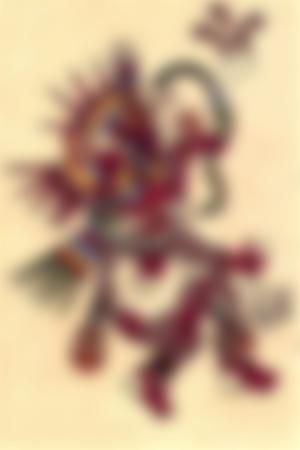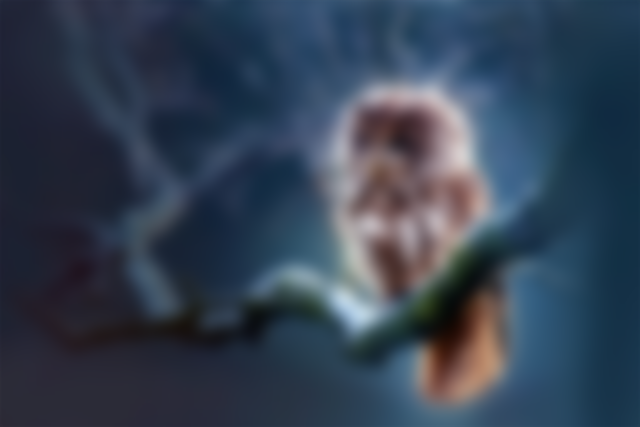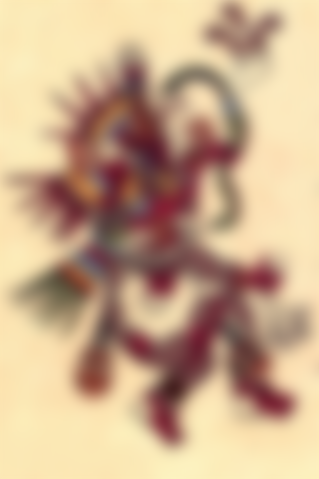In this retrospection, we will look at dinosaurs, reptiles, dragons and to some extent birds - a number of seemingly related topics, which are not necessarily as related as they seem.

In my first period at read.cash (which ended in August 2020), I wrote two articles about palaeontology (the study of extinct life), particularly about dinosaurs.
One was "How Can We Know Anything About Dinosaurs?”, in which I explain how we can draw (quite many) conclusions from the few traces they have left on earth.
As I have once described somewhere else, this is a fascinating problem, an intellectual challenge similar to that of archaeology, history in general - and forensic medicine & a criminal investigation: how to draw conclusions about the past from a number of - often seemingly insufficient - clues. There are differences between these disciplines, of course, but the way to think is the same, and to some extent the same or related methods can be used.
The other article was “To Revive an Extinct Dinosaur - Is it at all Possible?“
Since birds are descendants of dinosaurs and carry their genetic material, it is theoretically possible to breed chicken and step by step activate dormant dinosaur genes until we reach a dinosaur. This is called atavism activation. There are people making such experiments, although the viability of this method is still only theoretical.
However interesting it might be from scientific point of view, one can ask if this research is ethically justified. How would it be for a dinosaur in our present world? A life in captivity?
Or imagine that several individuals would be created; a group of theropoda dinosaurs that would breed independently! What would be the consequences of the introduction of a species that is alien to our contemporary environment? At that a theropod dinosaur, a close relative to the infamous Tyrannosaurus Rex.
A dinosaur also has the main role in "The Most Powerful Eyes", since Tyrannosaurus Rex might very well have had the most powerful eyes among terrestrial animals ever.

My own interest in palaeontology started in 1986, when Robert T. Bakker published: Dinosaur Heresies. It strongly stimulated my interest in palaeontology, a science I have been following closely since then. Bakker suggested a completely new picture of dinosaurs and the evidence he presented was very convincing. Later discoveries have corroborated several of his ideas, which are now firmly established in mainstream palaeontology. It is beyond the scope of this article to discuss details of this, we will just linger on one conclusion: that birds are surviving dinosaurs! Indeed, on the current level of knowledge, it is established that birds descend from a group of Saurischian dinosaurs, called Theropoda, a group containing, among others, the well-known Tyrannosaurus Rex. Birds (Aves) are a still surviving branch of Dinosauria!
Palaeontology is a fascinating subject to which I might very well return in future articles.
So, what about reptiles? Well, dinosaurs where not reptiles. Despite their name (dinosaur means lizard-like), they were not lizards. I have, however, written a few articles about reptiles as well.
First we have crocodiles, in connection with Egypt:
"The Sacred Crocodiles of Egypt" and "The Crocodile, a Symbol of Egypt?". I wrote about them in "Retrospection 2".
Then, in March 2021, I published a series about serpents & snakes:
1. From the Sacred Cobras of Egypt to Quezalcoatl: Serpents & Snakes in Mythology
2. Snakes in Astrology & Heraldry

The first article deals mainly with snakes in mythology - while, in the second, I bring up some snakes in symbology.
In the third article, I discuss real snakes: evolution, physiology, perception, venom, etc.
Now we come to dragons. But what is a dragon? Well, as far as we know today, they are neither dinosaurs nor reptiles, and entirely animals of imagination. The peculiar thing is that they occur over the whole world: practically all old cultures had their imaginary dragons - even if there were differences. Are they based on something that really existed in a distant past? Or is it a cultural idea, born in one single place and spread from there? Or is it just converging imagination?
I suppose we will never know. Meanwhile dragons continue to live in imagination. And they are not only something from the past; they are highly alive also in contemporary popular culture, especially in fantasy (art, literature and film). Just remember Game of Thrones or Anne McCaffrey's books!
My first article here related to dragons was "Mar Girgis - St. George & the Dragon", from 14 July 2020, where we follow the archetypal dragon slayer from Egypt to Scandinavia, and back to Egypt again.
Then, two days later, I published "Greedy Old Men, Dragons & Leaping Through the Dragon's Gate". There I discuss the Germanic dragon, as well as dragons in Japan, China and Bhutan.
In a series about flags and symbols, I wrote one article about “Flags with Dragons“.
Then finally, quite recently, I published "Animal Teeth, Sabre-Toothed Tigers & Dragon's Teeth", where we have the section “Dragon's Teeth”.
Copyright © 2021 Meleonymica/Mictorrani. All Rights Reserved.
My index has sections for Palaeontology & Evolution, Serpents & Snakes, and Dragons.
My series “Retrospection” is primarily created for new readers of mine, as a manual into my production at this platform so far - but it can be read by anyone who wants to explore my articles topic by topic, rather than doing so in chronological order.
You find all my writings on Read.Cash, sorted by topic, here.


